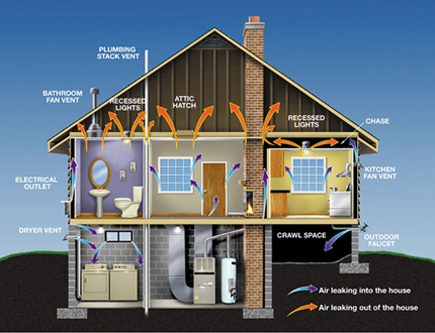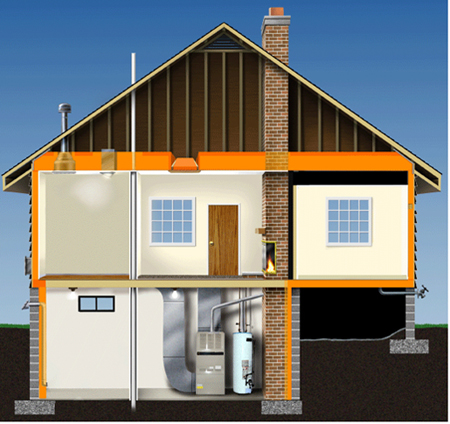Why:
The objective of insulation is to seal conditioned areas from air penetration, reduce heat transfer (R-value), and keep moisture out. In other words: insulation is needed to keep conditioned areas separated from unconditioned areas. It is important to insulate well (picture right), in cold and warm climates
 .
.

How:
The building envelope is made up in to two layers:
1--The air barrier is made up of drywall and sheathing, to stop air leaks. It also keeps moist air from penetrating into insulation material, which can dramatically reduce the R-value, damage the building materials, create mold, and affect the health of the inhabitants
2--The insulation barrier is made up of insulation material (batts or loose fill) that insulates against heat transfer, but does NOT seal against air leakage.
Moisture will dramatically reduce the R-value (insulation capacity/value/rating) of any insulation material.